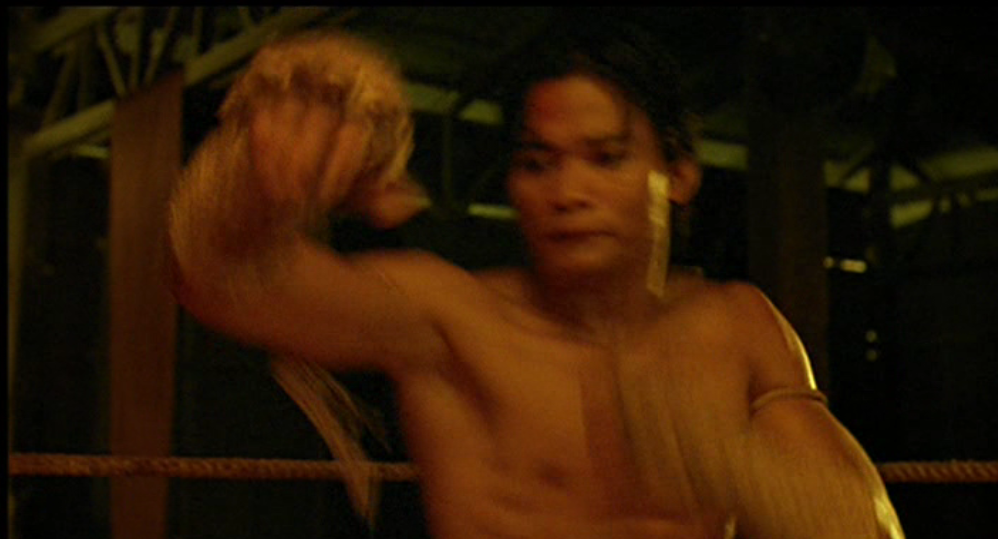Movie Review: Ong-Bak: The Thai Warrior (2003) directed by Prachya Pinkaew
Don (Wannakit Sirioput) had one job. Go to a remote village in Thailand, buy an ancient amulet at way below market price, and return it to mob boss Komtuan (Suchao Pongwilai) for sale on the black market. He failed because the village chief is saving the amulet for his son Humlae (Petchtai Wongkamlao) to wear when he finally returns to the village to take up his priestly role. Not wanting to return empty-handed, Don steals the head of Ong-Bak, the village’s guardian statue. The village is stricken with drought, and there are only six days left before the festival of Ong-Bak must be held to save it. The villagers turn to their tree-climbing champion Ting (Tony Jaa) to go to Bangkok and retrieve the head.

Ting is also skilled in the art of Muay Boran (an older form of Muay Thai) but has been warned never to use it except in self-defense as his master once killed an opponent in the ring and has been consumed with guilt ever since. The villagers pool their meager resources to aid Ting in his quest.
Once in Bangkok, Ting looks up Humlae to assist him. But Humlae has become the grifter George, perpetually losing at gambling and in debt to thugs. George’s only ally is his girlfriend Muay Lek (Pumwaree Yodkamol) who is allegedly a college student but mostly helps George with his scams. George has no interest in anything having to do with his hick home town or tracking down stolen stones. That is, until Ting stumbles into an underworld fight club and turns out to be awesome at kicking butt. Now, if he can just get Ting to make him some money….
This was the first Tony Jaa film to make it big in the West, and sparked a renewed interest in Thai films in general. Part of the attraction was that Jaa did all his own stunts without the aid of wires or computer graphics, which had come to dominate larger budget martial arts films at the time. Mix realistic-looking kickboxing and some parkour-style jumping, and you’ve got some very nice action scenes. I especially liked the Tuk Tuks (minicabs) chase sequence.
Komtuan puts in a strong performance as a man who doesn’t let the fact that he’s lost his larynx to throat cancer and is confined to a wheelchair stop him from villainous hubris.
One of the themes of the movie is “country good, city bad.” Ting is pure of heart and the villagers wholesome. The city dwellers are pretty much all jerks, most of the visible ones being mobsters or mobster-adjacent. Humlae/George has lost sight of what’s truly important in life, Muay is only slightly nicer, and even Ting darkens and becomes more violent as he spends time in Bangkok. A more direct contrast is when Ting chews natural herbs to refresh his energy before the final fight (good) while his opponent injects artificial chemicals (bad.)
If the movie has a flaw, it’s that the plot is a bit thin. This is the kind of story where the movie would have been a good hour shorter if George hadn’t kept trying to trick Ting into making money for him, or the bad guys simply turned over the stone head that was worthless to them.
Content notes: Violence, not usually too graphic. Don and a woman of negotiable virtue start a sex scene, but when Ngek mentions she wants to get clean, he murders her with a cocaine overdose. Also, one of the villainous fight club opponents molests a waitress and insinuates that Thai women are prostitutes. Komtuan smokes through a hole in his throat.
Ong-Bak gave martial arts film makers a kick in the pants and upped their game, so other movies since then have surpassed it. But it’s always good to go back to films that set off a trend and enjoy them on their own merits.

